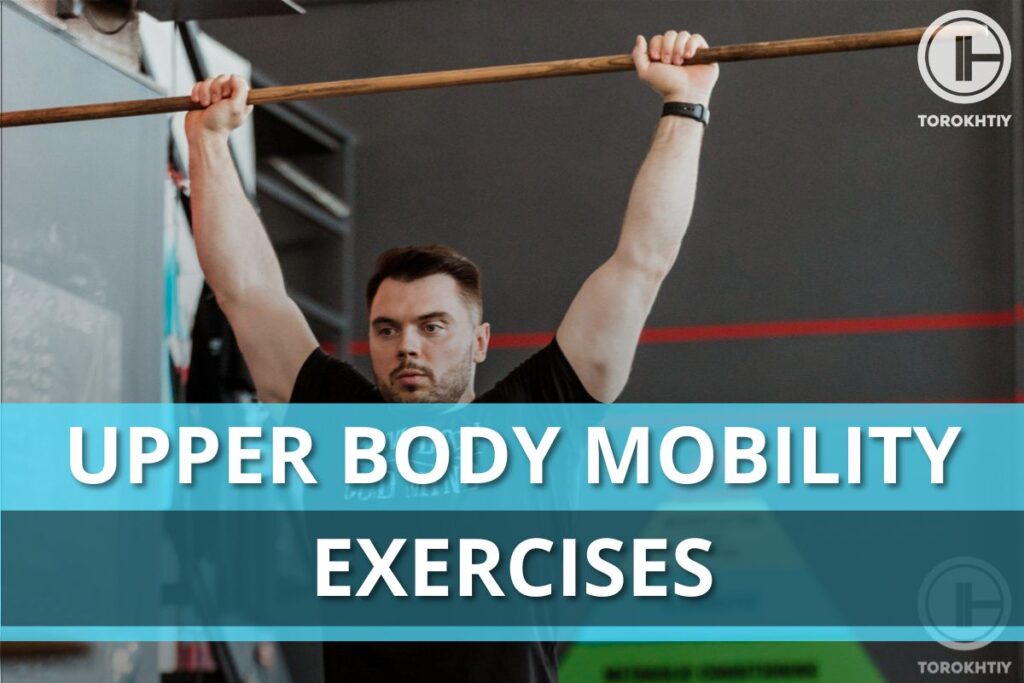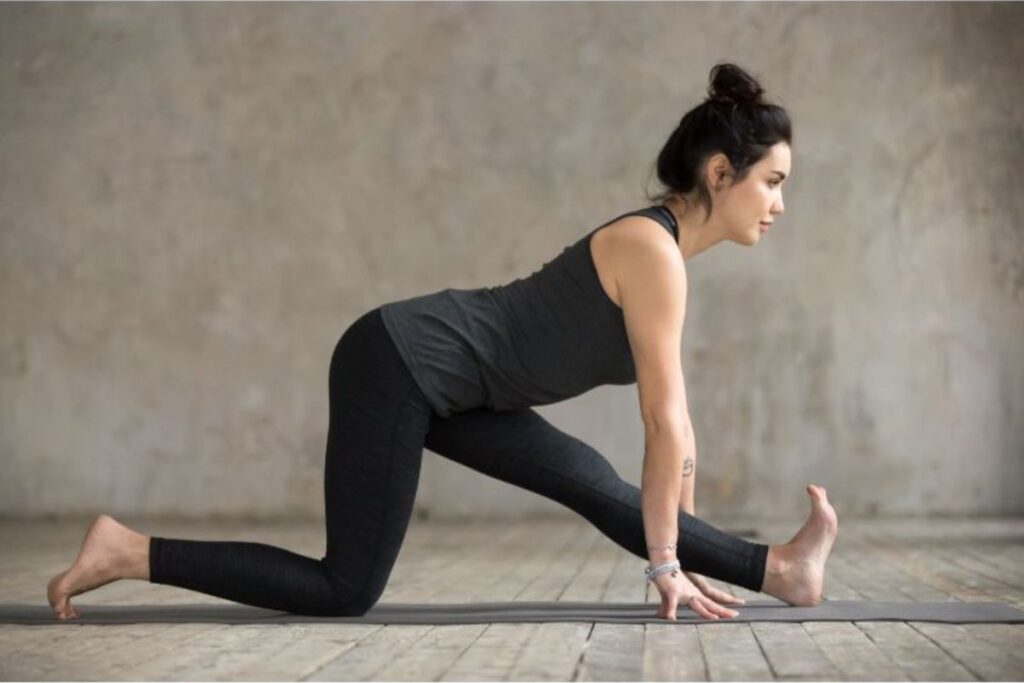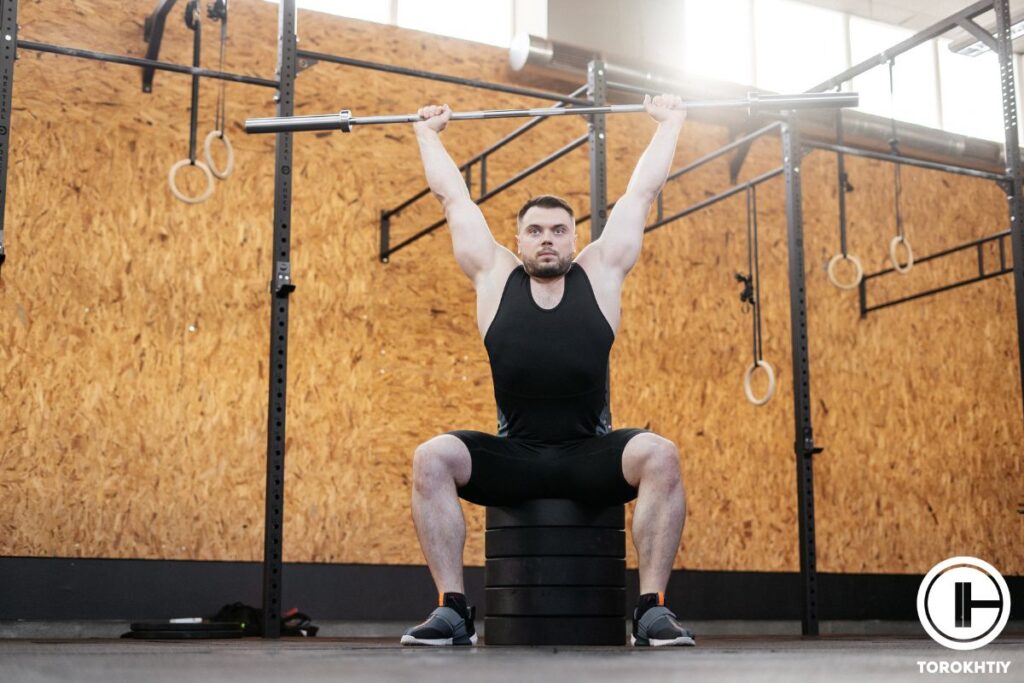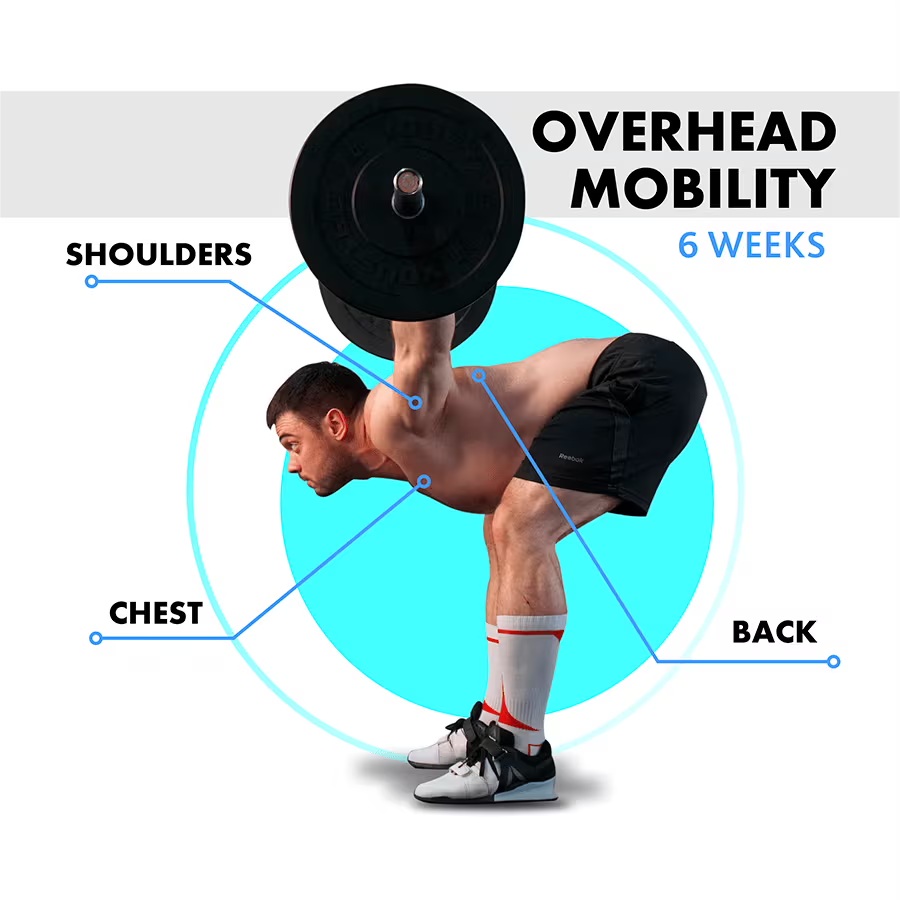Upper Body Mobility Exercises: How to Get in Peak Shape
Author:
Reviewed by:
(21 years of Oly Lifting experience)
Unlock your full potential by engaging with our experts and community! Have questions about your fitness journey or looking for expert advice on weightlifting techniques? Don’t hesitate — leave a comment below and Ernesto Mendez will provide a personalized answer and insights to help you reach your goals.
Torokhtiy is reader-supported. Some links are affiliate links, and we may earn a commission at no extra cost to you. See our disclosure page for details.
Upper body mobility is often overlooked by many people, but it’s an important part of overall fitness. If you’re wondering why it’s such a big deal or what exercises you can do to improve your upper body mobility, this article is exactly what you’re looking for. So upper body mobility: why is it important and how can you develop it? Let’s find out…
Upper body mobility is important because it makes you more flexible and allows a wider range of motion for your body, thus improving your athleticism. Some upper body mobility exercises include standing arm swings, downward dog, and thoracic rotation.
If you’d like to know more details about the benefits and how to do the exercises, keep reading.

Upper Body Mobility: General Description
Upper body mobility refers to the ability of your upper body to move without any pain or muscle soreness. For your upper body to be fully mobile, your joints, muscles, and connective tissues must work together seamlessly. Don’t confuse upper body mobility exercises with upper body flexibility exercises, though. They’re quite similar, but not exactly the same. Mobility focuses on the ability of your upper body to complete its full range of motion while flexibility refers to the ability of your muscle to lengthen.
It’s especially important for athletes and people who engage in activities that involve lots of movement in their upper body parts such as the shoulder. Lack of mobility will limit your athletic ability, stress your joints, and increase the chance of sustaining injury. You can test your upper body mobility if you’d like to give you an idea just how fit you really are. It’s one thing to have strong muscles, and another thing to be fit.
Follow us!

Free!
Get a 2-week Weightlifting Program as a bonus for the subscription to kickstart your training plan!

Free!
Benefits of Upper Body Mobility Exercises
I’ve already mentioned the major benefits of upper body mobility exercises, but let’s look at them in some detail.
Increased Flexibility
Let’s start with the obvious. One of the big causes of upper body stiffness is the lack of fitness. Over time, our muscles and joints start to stiffen such that you can’t easily stretch them anymore. This limits your range of movement and reduces your flexibility. Your muscles and joints need to be loose so that it’s easy to move them in whatever direction you’d like.

Upper body mobility exercises are, hence, imperative because they help keep your movements fluid. By keeping your joints, muscles, and connective tissue loose, you are automatically increasing your flexibility.
Less Chance of Injury
When your muscles, joints, and connective tissue get stiff, that can be dangerous for you. It’s not uncommon to see athletes sprain their muscles and joints by attempting movements that their bodies can’t take. This part is especially important if you engage in activities that require lots of upper body movement. For example, if you use your shoulders a lot in whatever you do, chances are you’ll run into trouble if those muscles around there are stiff and unyielding.
By loosening up with these exercises, you’re freeing up your upper body to enjoy its full range of motion with a reduced risk of injury.
Functional Use
For both athletes and regular people, the upper body is a central part of our daily activities. We shake people, hug them, and sometimes carry stuff from the top shelf. Athletes involved in sports like boxing, gymnastics, and fitness all use their upper bodies. Performing upper body workouts is therefore essential not only to keep yourself fit, but to help you go about your normal activities. Quite the handy exercise…

Upper Body Mobility Exercises for Peak Performance
Now that you know why you should bother doing upper body mobility exercises, I’ve got a list of exercises you can do for peak performance…
Standing Arm Swings
Perhaps my favorite upper body mobility warmup, standing arm swings are quite effective for loosening up your shoulders. They target your shoulders specifically but are great for your general upper bodies today. It’s a simple workout. Start by standing upright with your arms down by your side. Engage your core, make your elbows straight and flex arms muscles, then swing both arms up over your head and bring them back to the starting position. Then rinse and repeat, until you feel like your shoulders could rotate 360°.
Shoulder Pass-Through
The shoulder pass-through is another effective workout for developing shoulder flexibility and increasing range of motion. Typically, you would need some kind of rod or stick to hold with both hands using an overhand grip. Then stand upright while holding the stick across your body with your arms stretched out of your body and parallel to the floor. Once set, slowly raise the stick in your hands until it’s overhead. Go as far back as you can and hold that position for as long as you can. Then come back down and go again.
High-To-Low Rows
One of my favorite things about these upper body mobility exercises is that most of them do not require any complicated movements. They’re just simple movements you can do even from home. High-to-low rows are another easy workout that helps with your upper body. It targets your upper back and thoracic muscles and helps provide extra stability for the shoulder joint.
To effectively perform this workout, you need a resistance band. Anchor the band around something higher than you, then kneel on one knee like you’re about to propose. Use your opposite hand to then pull the band down until your upper arm is parallel to your body.
Rotation With Dumbbell
If you engage heavily in overhead and throwing movements, rotation with a dumbbell is a great way to warm up. You can loosen up the muscles and joints in your shoulder and build not only flexibility but also strength. Rotation with a dumbbell is also easy to learn and master. Stand with your feet about shoulder length apart and hold a light dumbbell. Once set, raise your elbow up until it’s on the same line with your shoulder and your hand is facing downward.
Now your starting position is set, the next step is to rotate your elbow until your hand now faces upward. Slowly go back to your starting position, and you can go again as many times as you’d like before switching hands and doing the same thing again.
Thoracic Rotation
Back to needing no equipment and thoracic rotation is one effective drill that will help free up your upper body. You start by kneeling down and bending slightly forward until your hands also touch the ground. Make sure to keep your back and elbow straight. Then put one arm over your head and rotate that arm toward your other arm before moving in the opposite direction so that your elbow is pointing up to the sky. You can repeat this as many times as you want and switch hands too.
Upper Body Rotation
Upper body rotation is super similar to thoracic rotation. In fact, it involves all the exact same steps except one. Instead of putting your hand on your head so that your elbow is jutting out like in thoracic rotation, you just keep your arms outstretched. Then swing your body until your hand is pointing up. Then come back to the starting position and go again.
Cat Camel
This drill is working on your arms, neck, and shoulder. Also called the cat and cow, it helps to stretch your abdomen and spine and improves your posture as well. To do this workout, go down on all fours. Your hands should be in line with your shoulders as your legs with your hips. Then take a deep breath, and as you exhale, engage your core and pull your spine upwards. At the same time, release the tension in your neck by pulling your chin down towards your chest. This is the first phase and should look somewhat like a cat stretching.
For the second part, inhale and arch your back inwards, pushing your tailbone upwards this time while lifting your head. Of course, don’t keep any tension in your neck. This is now the cow part of the exercise. Keep moving back and forth between the two parts.
FAQ
What Causes Lack of Shoulder Mobility?
One major cause of poor mobility in your shoulders is something called adhesive capsulitis, which happens when the tissues around the shoulder area become stiff and/or inflamed. Other causes include previous injury or simply lack of exercising.
Why Do I Have a Limited Range of Motion in My Shoulder?
Again, it’s most probably because you haven’t exercised for a long time and the muscles and tissue around that area are getting stiff. You can do some upper body mobility warm up to loosen your shoulder up.
How Long Does It Take To Get Flexible Shoulders?
If you continue these upper body flexibility exercises regularly, you should start to feel a difference in about two weeks. Of course, the longer you continue the better the mobility.
Conclusion
Now you know about upper body mobility and what exercises you can do to keep your upper body as fit as possible with a full range of motion. You can mix them up and add them to your general workout routines to help stretch and strengthen your upper body for more workouts.
Now it’s your turn. Have you ever had difficulty moving your upper body in any direction? Which of these exercises sounds like the most fun? Is there anything I missed? I’ll read all your comments so lay it all out for me.
Also read:
- Lower Back Mobility Exercises
- Overhead Squat
- Trapezius Stretches
- Neck Mobility Exercises
- Stretching for Weightlifting
- Squat Stretches
- Tricep Stretches
References:
- 5 Quick Tests to Screen Your Mobility You Can Do at Home // TheUAP: https://www.theuap.com/blog/5-quick-tests-to-screen-your-mobility-you-can-do-at-home
- Why Being Flexible Is Great for Your Health // HealthLine: https://www.healthline.com/health/benefits-of-flexibility
- 10 Great Upper Body Exercises for Women // HealthLine: https://www.healthline.com/health/upper-body-workout-for-women
- Four Ways to Reduce Your Risk of Injury // My Alive: https://www.myalive.com/four-ways-reduce-your-risk-injury
- Thoracic Mobility Exercises For A Strong, Pain-Free Back // HealthLine: https://www.healthline.com/health/fitness/thoracic-mobility-exercises
- Photos by Torokhtiy Media Team; fizkis, Canva.com.
Why Trust Us?
With over 20 years in Olympic weightlifting, strength training, nutrition coaching, and general fitness our team does its best to provide the audience with ultimate support and meet the needs and requirements of advanced athletes and professional lifters, as well as people who strive to open new opportunities and develop their physical capabilities with us.
By trusting the recommendations of our certified experts in coaching, nutrition, and sports training programming, as well as scientific consultants, and physiotherapists, we provide you with thorough, well-considered, and scientifically proven content. All the information given in the articles concerning workout programming, separate exercises, and athletic performance, in general, is based on verified data.
The product testing process is described in more detail here.
Author: Ernesto Mendez
Orthopedic Clinical Specialist
Best Results: Snatch – 208 kg,
C&J – 240 kg
Dr. Ernesto Mendez is a licensed physical therapist, a board Orthopedic Clinical Specialist (OCS) and founder of Movement 4 Wellness Physical Therapy, LLC. He earned his degree from Thomas Jefferson University. He is also an Olympic weightlifting coach (USAW L1) and Functional Fitness Level 1 Trainer. His experience includes the areas of pain management, movement analysis, injury recovery, surgical rehab, corrective exercise, and athletic, military, and occupational performance. Dr Mendez is passionate about Olympic weightlifting and fitness. Ernesto Mendez is responsible for designing multiple training programs, writing blog articles, posting daily weightlifting content, doing live weightlifting and mobility seminars.
Reviewed by: Oleksiy Torokhtiy
Olympic Weightlifting Champion, PhD in Sport Science
Best Results: Snatch – 200 kg,
C&J – 240 kg
Oleksiy Torokhtiy is a professional athlete boasting 20 years of experience in Olympic weightlifting. With multiple European and World titles under his belt, he has showcased his prowess in two Olympic Games (Beijing 2008 and London 2012). Upon concluding his illustrious career, Oleksiy dedicated himself to coaching. By 2022, he had conducted over 200 weightlifting seminars worldwide. He is the visionary behind an international sportswear and accessories brand known for its motto, “Warm Body Cold Mind.” Additionally, he is an esteemed author and the creator of a series of training programs and eBooks.





Still have questions after reading our article? Unlock your full potential by engaging with our experts and community! Don’t hesitate — leave a comment below and Ernesto Mendez will provide a personalized answer and insights to help you reach your goals.